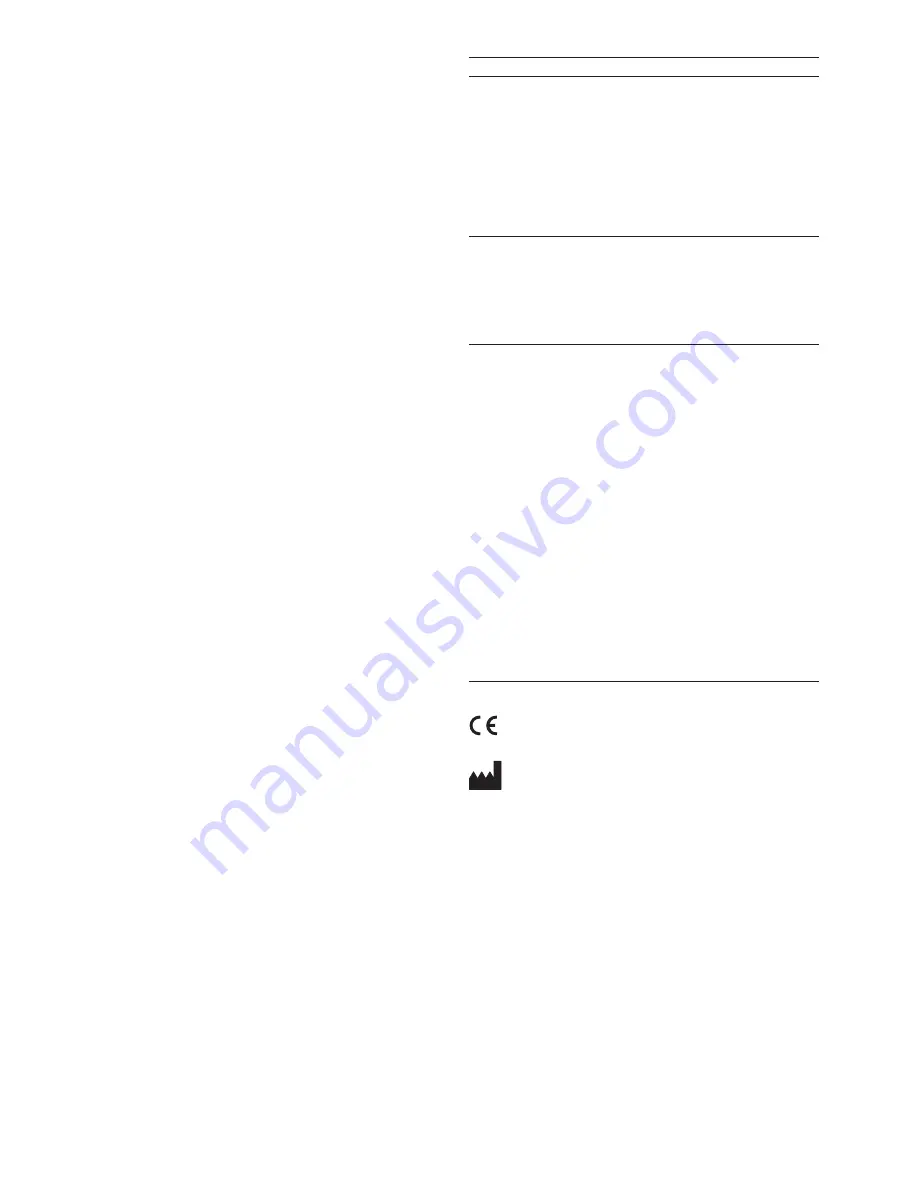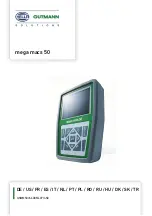
SM_708378 AC
page 3 / 3
Special instructions for mechanical cleaning
– In case of extreme soiling and encrusting (e.g. coagulated blood or secretion
residues), it may be necessary to further clean the SynFrame Light-transmitting
Rod manually.
–
Remove dirt residues on optical surfaces (see figure 1,
➊
and
➋
) using cotton
soaked in alcohol (70% ethanol) or a neutral cleaning agent.
– Check the water quality regularly to avoid formation of residues and corrosion.
– Do not use grease or washing agents; there may be problems with respect to
compatibility with plastics or adhesives and compatible accessories (e.g. electri-
cal wires).
Sterilisation
Before sterilisation, make sure the SynFrame Light-transmitting Rod and the optical
surfaces in particular (see figure 1,
➊
and
➋
) are clean and that testing the
SynFrame Light-transmitting Rod does not lead to any findings that impose restric
-
tions on the use.
Further detailed instructions for reprocessing reusable devices are described in the
Synthes brochure “Important Information”. Assembly and disassembly instructions
of instruments “Dismantling Multipart Instruments” can be downloaded from:
http://emea.depuysynthes.com/hcp/reprocessing-care-maintenance
Checking the fiber optics
–
Hold one side of the fiber optic (e.g. the distal end) in the direction of a bright
ceiling lamp. For this test, do not use any cold light source. View the other side
(light cable connection) holding it relatively close to the eye. The individual fibers
now appear to be bright. Move the side held against the lamp. The brightness
of the fibers now changes. If certain fibers remain dark, this is not a cause for
concern. The intensity of illumination of the SynFrame Light-transmitting Rod
decreases with an increasing rupture rate of the fibers.
– The surfaces of the light inlets and outlets must be smooth and clean. If the
surfaces show certain deposit layers, or if rough fibers can be felt or are with
-
drawn, illumination might be inadequate. If the SynFrame Light-transmitting Rod
is used or prepared in this condition, it is likely to be further damaged.
Send the SynFrame Light-transmitting Rod to the manufacturer for an inspection if
the fiber optics is damaged.
Trouble shooting
Defect
Possible cause
Possible solution
Too little
illumination
–
dirty fiber-optic surfaces
(figure 1,
➊
and
➋
)
– stubborn residue, encrusting
on the fiber-optic surfaces
– wrong light cable connection
–
defective fiber optic
– defective light cable or light
source
–
clean the fiber-optic surfaces
as per instructions (manual
cleaning)
– remove residues as per instruc-
tions/ check water quality
– check whether light cable
connection sits well and is
connected properly
–
check fiber optic as per instruc
-
tion
– check light cable connection
and light source
Yellowish
light
–
dirty fiber optic
– dirty or defective light cable
connection
–
clean fiber-optic surfaces
(figure 1,
➊
and
➋
). If re-
quired, send the SynFrame
Light-transmitting Rod in for
servicing
– check light cable connection
(e.g. by illuminating a white
surface)
Corrosion,
formation
of patches,
decoloring
– inadequate cleaning
(e.g. protein residue)
– inadequate rinsing of the
SynFrame Light-transmitting
Rod between different
preparation phases (espe-
cially before sterilisation)
– high chloride concentration
– heavy metal ions and/or sili-
cates, increased content of
iron, copper manganese in
water or sterilisation steam
– high concentration of mine-
ral substances (e.g. calcium)
or organic substances
– infected or too frequently
used disinfection or cleaning
solutions
– outside rust (e.g. through
steam or preparation along
with damaged or rust-prone
instruments)
– contact corrosion
– subsequent cleaning up, if
required by thorough rubbing
– ensure adequate rinsing
between the individual pre-
paration phases
– check water quality
– check water quality, only use
de-ionised (distilled) water
– check water quality, only use
de-ionised (distilled) water
– regularly replace the disinfec-
tion and cleaning solutions
– check maintenance systems;
in case of preparation with
other materials, check for
material compati bility, existing
damages and avoid mutual
contact
– avoid mutual contact with
other metal components
Synthes GmbH
Eimattstrasse 3
4436 Oberdorf
Switzerland
Tel: +41 61 965 61 11
Fax: +41 61 965 66 00
www.depuysynthes.com





















